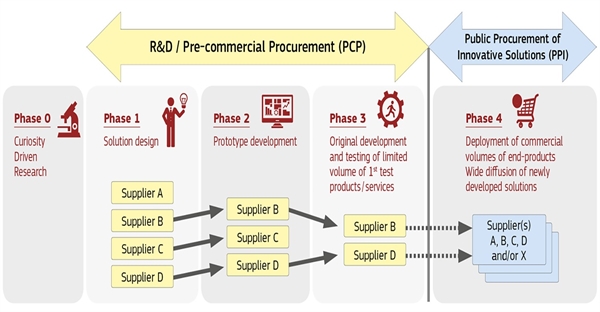22.12.16
Putting innovation at the heart of public procurement
Source: PSE Dec/Jan 17
Malcolm Harbour CBE, who wrote Parliament’s first report on innovation in public procurement in 2008 and now chairs the LGA Task and Finish Group on this issue, outlines how public bodies can embed innovation in spite of tight budgets.
For many in the public sector, ‘innovation’ is not synonymous with ‘public procurement’. On the contrary, ‘legalistic’ and ‘bureaucratic’ would generally be the most associated characteristics.
Yet innovation can help deliver quality services with fewer resources, in more joined-up ways, responding to users’ needs more efficiently and effectively, stimulating local employment and economic growth. But few public organisations are beacons of innovative practice. Reforming procurement would help to put innovation at the centre of their activities.

Mainstreaming innovation across the public sector
The encouragement of innovation was embedded into the 2015 Public Contract Regulation. The published guidelines encourage the use of competitive dialogue for design or innovative requirements where no pre-determined solutions are available. There are new tools to encourage technology challenges, such as Pre-commercial Procurements, and there is an entirely new legal tool, the innovation partnership procurement.
Innovative procurers are not on their own. There are extensive EU best practice networks, publications and training courses. EU funding is still available for project support. In a number of countries, including the UK, public procurement is recognised as a principal instrument to promote innovation. Innovate UK operates the Small Business Research Initiative (SBRI), the UK form of Pre-commercial Procurement. Since 2009, over £350m has been invested in contracts. However, the adoption of innovative procurement practices has been very uneven across the UK public sector. Most SBRI support has been taken up in health and central government, and much less with local authorities.
The LGA is now addressing this deficit through an expert group that will report in 2017. In her recent speech to the CBI, the prime minister highlighted the need to boost innovative public procurement and announced a review of the SBRI, which will also report next year.
Challenging innovators to deliver new solutions
Many public sector customers can see the possibilities offered by innovation. They would like to find new ways to deliver better services, more efficiently, at lower costs. But the process of being an innovator can seem difficult and risky. Pre-commercial Procurements set up challenges for competing technologies, with a possibility of a major contract at the end, and will manage the generation of great ideas. They work best when their customers set challenging problems to solve, without prescribing solutions.
Innovative suppliers will deliver those great solutions, tailored to their needs, by deep engagement with a smart and demanding customer. This engagement can take the new technology through development, test and deployment. The illustration shows how this ‘Pre-commercial Procurement’ stage can be organised.
Technology contests can significantly enlarge the range of suppliers. For small and medium enterprises (SMEs), participation can be particularly attractive. The prospect of a significant contract from a public authority makes it easier for SMEs to raise capital from outside sources. If they are appointed as a lead contractor, their company becomes much more attractive and a much less risky proposition for investors.
All companies involved, even those not chosen as preferred suppliers, gain benefits. Many go on to exploit the developed solutions and find other customers for their product or service.
Removing the obstacles
Risk aversion is the biggest obstacle to working with new suppliers offering ‘cutting edge’ solutions. Most public authorities have very tight budgets. Procurement teams are reluctant to take on uncertain, complex and potentially risky projects. It is safer to procure a proven solution from an existing supplier, where the tendering process is felt to be straightforward and easy to complete. Political leadership often avoids solutions which are perceived to carry higher risks. There are continued worries about contravening public procurement law.
Integrating innovative public procurement into an organisation requires strong political and operational leadership. Internal ‘customers’ must work in strategic and open-minded ways with procurement specialists. Social value requirements are already moving procurement into many ‘non price’ dimensions. Encouraging innovation is a further challenge that must be embraced.
FOR MORE INFORMATION
W: www.gov.uk/government/collections/sbri-the-small-business-research-initiative
W: http://eafip.eu
W: https://ec.europa.eu/digital-single-market/en/innovation-procurement
Tell us what you think – have your say below or email [email protected]